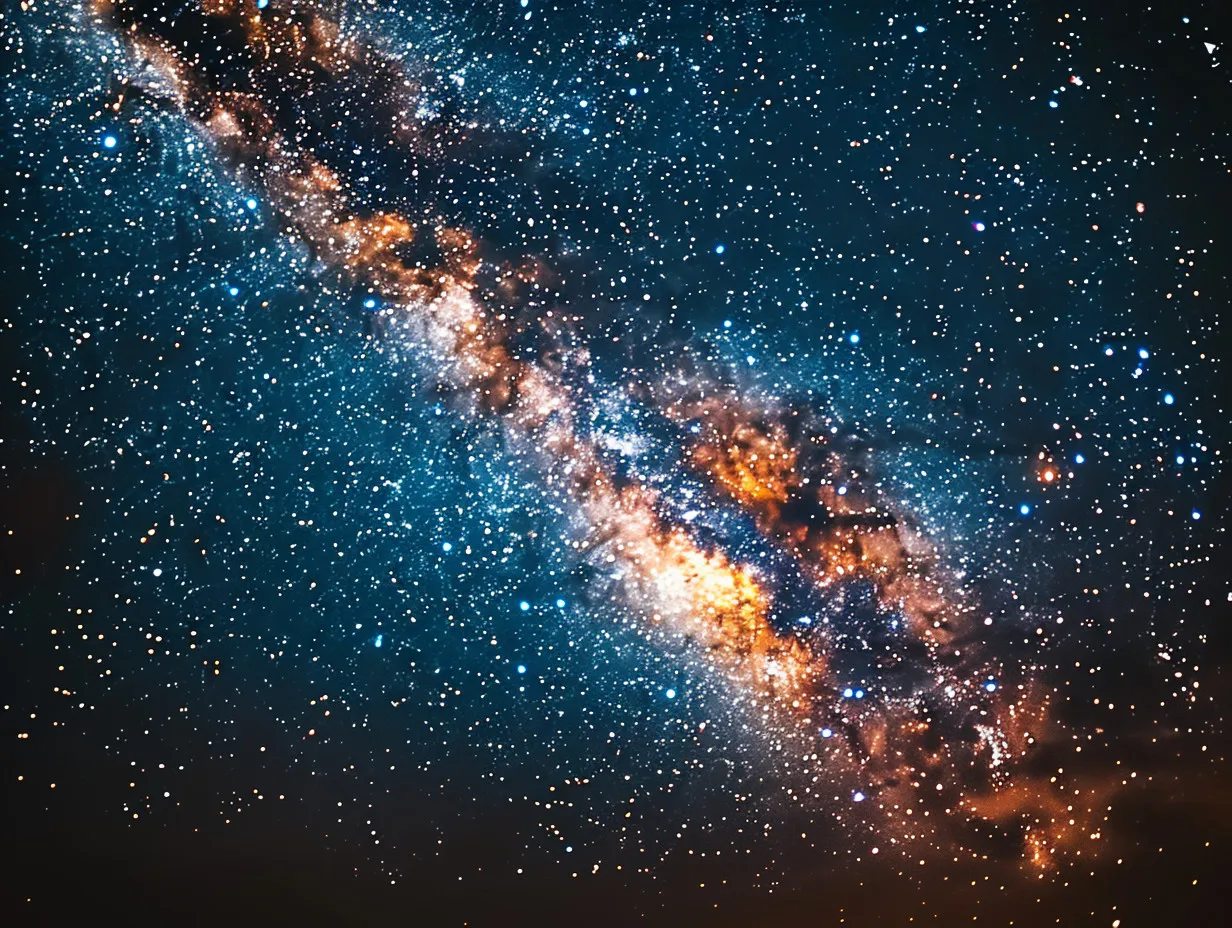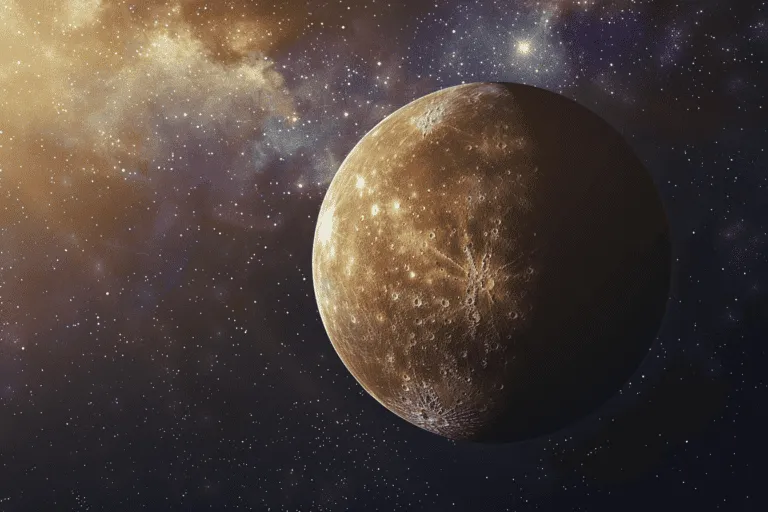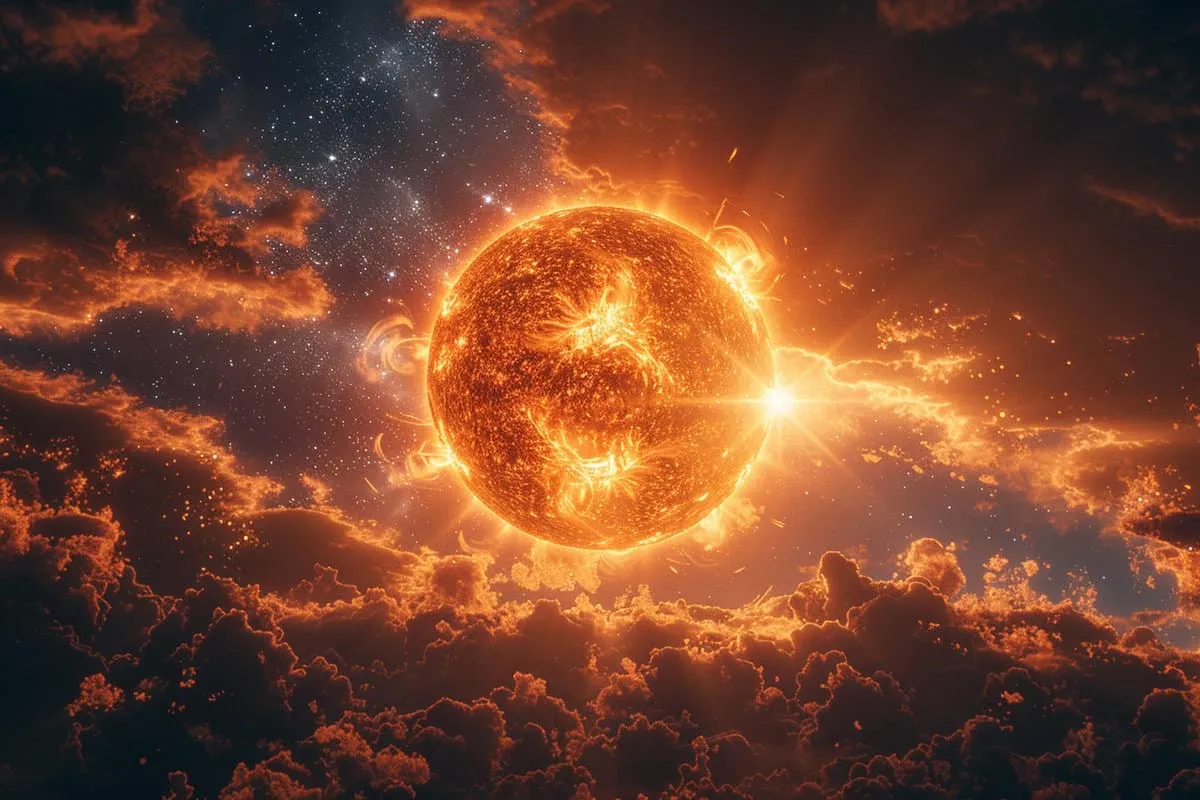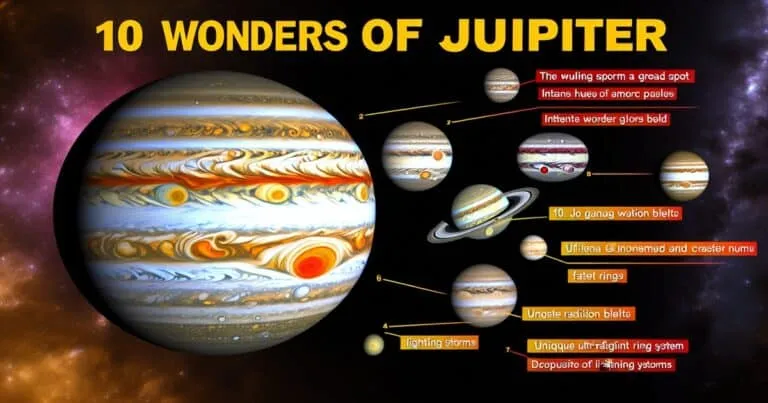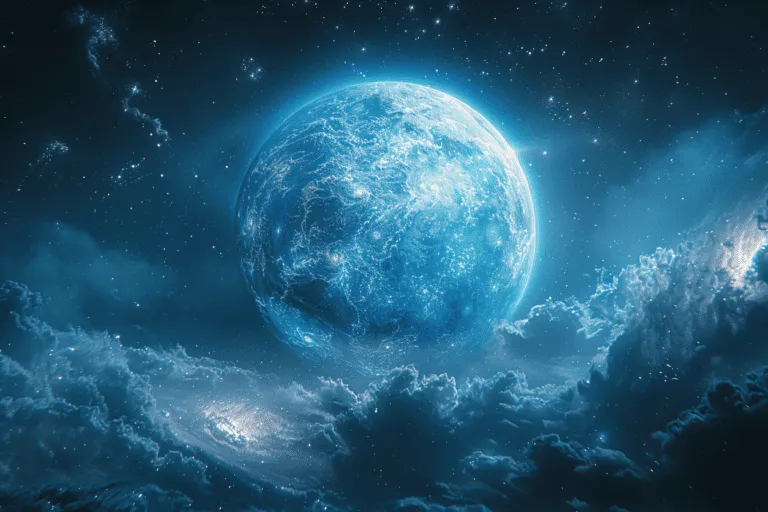10 Milky Way Facts: Discover the Galactic Center Black Hole and More
Get ready to dive into the universe with these intriguing Milky Way facts. From its sheer size to captivating mysteries, you’ll be amazed by what our galaxy has in store for you. Learn about black holes, billions of stars, and mind-boggling distances that will leave you in awe.
Curious to uncover the secrets of our cosmic neighborhood? Scroll down for a stellar journey through some of the most astonishing Milky Way facts that will blow your mind!
1. Galactic Center Black Hole
Galactic Center Black Hole is at the heart of our Milky Way galaxy, known as Sagittarius A*. This enigmatic black hole holds a mass equivalent to four million suns, influencing the motion of stars near it. The presence of this colossal black hole impacts the structure and evolution of our galaxy, shaping its dynamics and composition.
Scientists observe X-ray emissions from the swirling disk of gas surrounding Sagittarius A*, providing crucial insights into the behavior of matter under extreme conditions. These emissions help unravel the mysteries of interstellar space within the galactic center, shedding light on processes like accretion and high-energy phenomena.
Exploring this central region offers a glimpse into the gravitational forces governing stars, gas clouds, and other celestial bodies within our home galaxy, providing valuable data for astronomers studying not just the Milky Way but also neighboring galaxies like Andromeda and dwarf galaxies in our cosmic neighborhood.
2. Stellar Nurseries
Stellar nurseries play a crucial role in nurturing young stars within our galaxy, including our own sun. These regions act as cosmic cradles where baby stars are born and evolve over millions of years. Scientists extensively study these nurseries to understand the intricate processes of star formation.
The diversity of stars that emerge from stellar nurseries is astounding, ranging from massive, luminous stars to smaller, dimmer ones like our sun. These nurseries provide the ideal conditions for gravitational forces to trigger the birth of new stars.
Years of observation have revealed that stellar nurseries are dynamic environments where gas and dust come together, eventually collapsing under their weight to form new stars. Understanding the mechanisms at play in these regions is fundamental to unraveling the mysteries of the universe.
3. Dark Matter Halo
The dark matter halo enveloping the Milky Way holds intriguing mysteries. This invisible cosmic entity, outweighing regular matter, plays a crucial role in shaping the galaxy’s structure. Dark matter interacts solely through gravity, influencing the movement of stars and galaxies within its grasp. Despite its significance, dark matter remains elusive due to its inability to emit light or energy.
Studying the dark matter halo poses challenges as it does not consist of conventional heavy elements or dust, making it undetectable through traditional means. Scientists rely on gravitational effects and computer simulations to understand this enigmatic component. The ongoing debate surrounding the exact nature and type of dark matter adds complexity to unraveling its secrets within the Milky Way.
4. Spiral Arm Structure
The Milky Way galaxy showcases a remarkable spiral shape, characterized by its distinct spiral arms. These arms, including the well-known Orion Arm and Sagittarius Arm, play a crucial role in shaping the galaxy’s structure. Each arm contains a myriad of stars, gas, and dust, contributing to the vibrant tapestry of our galaxy.
The spiral arm structure influences the dynamics of the Milky Way, impacting star formation rates and distribution throughout the galaxy. The gravitational interactions within these arms lead to the formation of new stars and stellar clusters. These arms serve as sites for intense stellar activity, such as supernovae explosions and star formation regions.
Understanding the intricate details of the Milky Way’s spiral arms provides valuable insights into the evolution and behavior of our galaxy, shedding light on its past, present, and future.
5. Milky Way’s Size
The Milky Way galaxy spans an immense size, measuring about 100,000 light years in diameter. To put this into perspective, it would take traveling at the speed of light around 100,000 years to cross from one end to the other. In terms of mass, the Milky Way weighs approximately 1.5 trillion solar masses. Compared to other galaxies, the Milky Way falls into the category of a large spiral galaxy. Its sheer scale influences various aspects of its evolution and structure.
- The Milky Way is part of a group of galaxies known as the Local Group, which includes over 54 galaxies.
- The Andromeda Galaxy, another member of the Local Group, is slightly larger than the Milky Way.
- The vast size of the Milky Way allows for the formation of structures like its spiral arms and central bulge.
6. Star Formation Rate
The star formation rate in the Milky Way is a fascinating aspect of our galaxy’s evolution. New stars are continuously being born, contributing to its dynamic nature. Factors such as interstellar gas density, temperature, and turbulence play crucial roles in star formation, shaping the stellar landscape we see today.
Studies show that regions with high levels of radio radiation often indicate active star formation, highlighting the link between energetic processes and the birth of new stars. Understanding the mechanisms behind star formation not only provides insights into the Milky Way’s past but also sheds light on its future evolution.
- Interstellar gas density, temperature, and turbulence influence star formation.
- High levels of radio radiation signify active star formation regions.
7. Halo of Globular Clusters
The Milky Way boasts a spherical halo enveloped by globular clusters, each containing thousands to millions of ancient stars. These clusters, distinct from open clusters, are tightly bound and orbit the galactic center. Astronomers study these faint nebulae to unravel the galaxy’s history, as they are among the oldest structures in the Milky Way. Comprising mostly old stars, globular clusters lack young stellar associations found in other regions of the galaxy. The age and composition of these clusters provide crucial insights into the early stages of our galaxy’s formation.
- Globular clusters: Ancient star clusters surrounding the Milky Way.
- Galactic history: Understanding the Milky Way’s evolution through cluster analysis.
- Old stellar populations: Lack of young stars within globular clusters.
8. Galactic Collision History
Galactic collisions have played a significant role in shaping the Milky Way’s history and structure. These cosmic events, involving the merging of galaxies, have left lasting impacts on our own galaxy. The collision with the Sagittarius Dwarf Spheroidal Galaxy, for instance, has contributed to the formation of the Milky Way’s spiral arms and has triggered periods of intense star formation.
Future galactic collisions are also anticipated, such as the impending collision with the Andromeda Galaxy in about 4 billion years. This event is expected to result in a new elliptical galaxy formed from the merger of the Milky Way and Andromeda.
9. Milky Way’s Rotation
The Milky Way rotates like a giant celestial carousel in the night sky. It completes a full rotation every 200 to 250 million years, moving at about 828,000 kilometers per hour. This rotation creates a great circle across the sky, visible mainly in the southern hemisphere. The galaxy’s rotation influences various aspects of its structure and behavior.
The Milky Way’s rotation plays a crucial role in shaping its spiral arms and overall structure. As it spins, stars and gas clouds move around the center at different speeds, leading to the distinctive spiral pattern seen from Earth. This rotational motion also affects how stars and planetary systems form and evolve within the galaxy.
Understanding the Milky Way’s orbit provides valuable insights into its dynamics and evolution over billions of years. By studying its rotation, astronomers can unravel mysteries about the galaxy’s past, present, and future movements in the vast cosmic expanse.
10. Oort Cloud
The Oort Cloud lies at the outer edges of our solar system, extending far beyond Pluto. Composed of icy objects and dust clouds, it plays a crucial role in protecting the inner planets from potential threats. This vast cloud is believed to be a remnant of the early solar system, containing billions of objects.
One fascinating aspect of the Oort Cloud is its connection to long-period comets. These comets originate from this region and occasionally venture closer to the Sun, creating stunning celestial events. The Oort Cloud’s immense size and distance make it a mysterious yet essential part of our cosmic neighborhood.
With its shielding effect, the Oort Cloud acts as a barrier against stray objects that could collide with Earth. This protective function helps maintain stability within our solar system, highlighting the significance of this distant yet impactful area.
Frequently Asked Questions
What is the Galactic Center Black Hole?
The Galactic Center Black Hole is a supermassive black hole located at the center of the Milky Way galaxy, known as Sagittarius A*. It has a mass equivalent to about 4 million suns and plays a crucial role in shaping the dynamics of our galaxy.
How do Stellar Nurseries contribute to the Milky Way’s evolution?
Stellar Nurseries are regions where stars are born from collapsing gas and dust. These nurseries replenish the galaxy with new stars, enriching it with heavy elements, and influencing its overall structure and composition over time.
What is the significance of the Dark Matter Halo in the Milky Way?
The Dark Matter Halo is an invisible mass surrounding the Milky Way that exerts gravitational influence on visible matter. It helps stabilize galactic structures, including spiral arms and star orbits, contributing to the galaxy’s overall stability and evolution.
How does the Spiral Arm Structure impact star formation in the Milky Way?
The Spiral Arm Structure of the Milky Way acts as regions of increased density within which gas clouds can collapse to form new stars. This structure facilitates ongoing star formation processes throughout different parts of our galaxy.
Why is understanding the Star Formation Rate important for studying the Milky Way?
The Star Formation Rate indicates how quickly new stars are being born in a galaxy like the Milky Way. By studying this rate, scientists can gain insights into past galactic events, evolutionary trends, and even predict future changes within our cosmic neighborhood.

